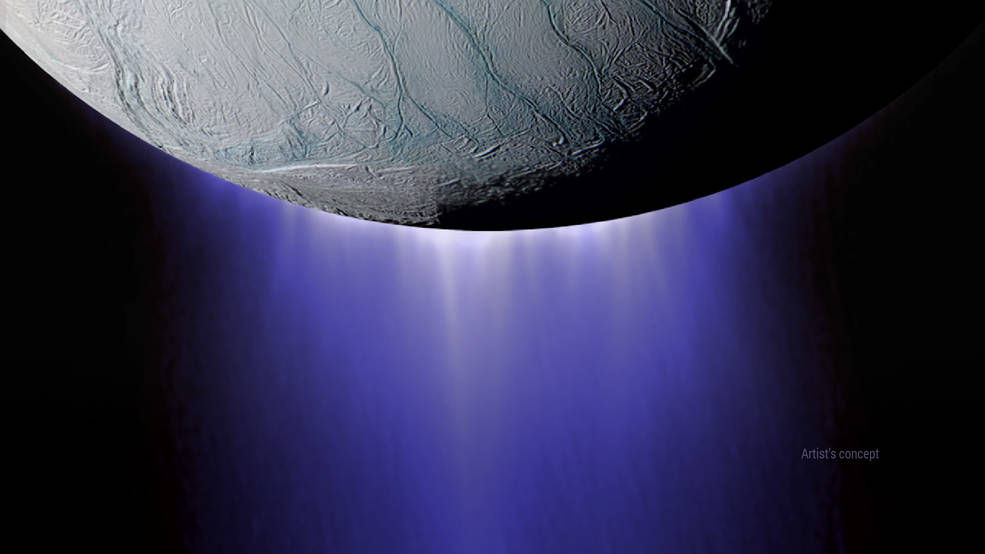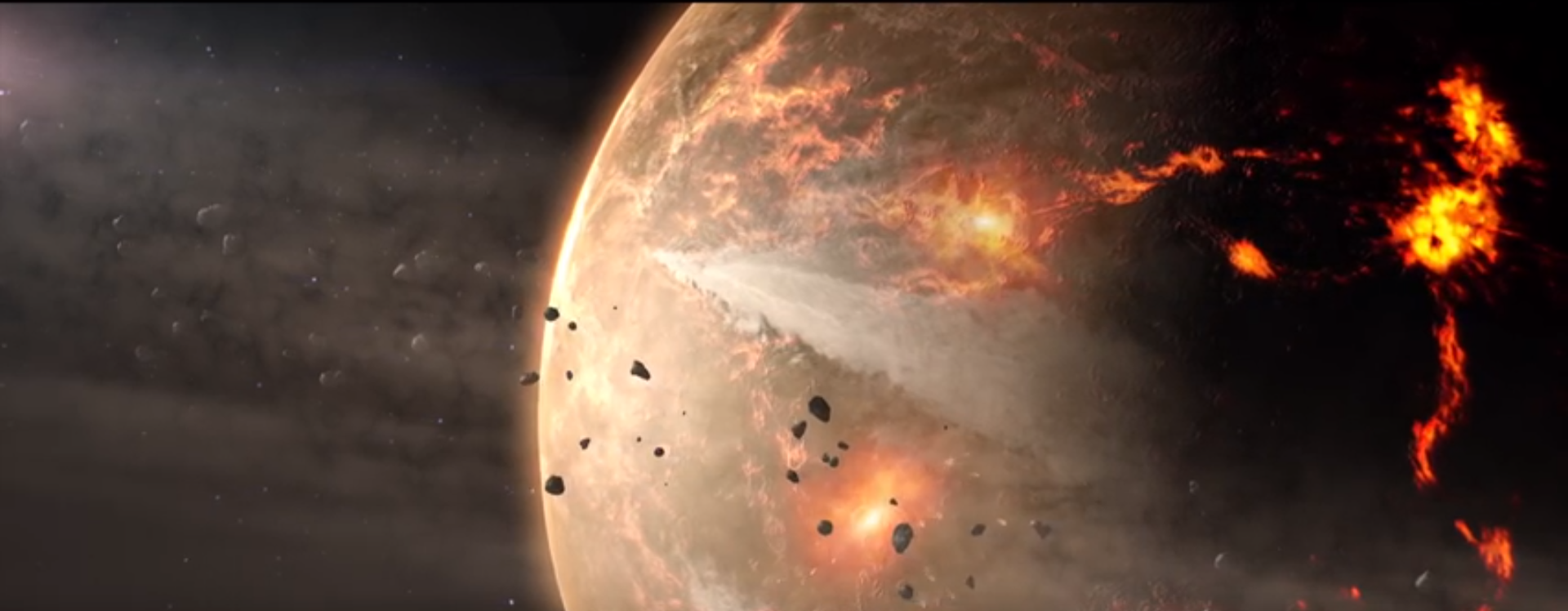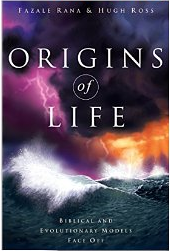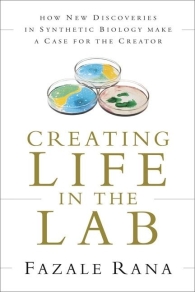
Senior researcher Ramanarayanan Krishnamurthy at The Scripps Research Institute (TSRI) has recently made a captivating, if not fanciful, statement regarding the remarkable capabilities of a little molecule bearing a quite mundane moniker: diamidophosphate, or DAP:
“It [DAP] reminds me of the fairy godmother in Cinderella, who waves a wand and poof, poof, poof, everything simple is transformed into something more complex and interesting.”1
Krishnamurthy is referencing DAP’s newfound, transformative qualities as described in an article published in Nature Chemistry: “Phosphorylation, oligomerization and self-assembly in water under potential prebiotic conditions.”2 The title is a bit more detached but sure to invoke at least a bit of giddy excitement among those who follow the origin-of-life (OOL) question. Has a new incarnation of spontaneous generation, a DAP phoenix, risen from the ashes? Has the secret recipe for “life in a jiffy” been revealed? Is prebiotic soup back on the table? In the researcher’s own whimsical words, “Poof, poof, poof!”
Remarkably, DAP can phosphorylate three distinct types of biologically significant molecules: nucleosides/tides, amino acids, and lipid precursors. Adding phosphoryl groups to these molecules allows a progression of chemical reactions necessary to advance bottom-up OOL scenarios. DAP reacts with these diverse prebiotic molecules so that they may further assemble into larger biologically significant molecules: oligonucleotides, peptides and liposomes, respectively. Furthermore, DAP’s phosphorylating reactions occur readily, not requiring condensation reactions to drive particular chemical processes to completion.
To their credit, the research team carefully crafted their experimentation using as many plausible prebiotic reagents and primordial conditions as possible. Even so, the initial DAP reagent was synthesized from the “prebiotically available trimetaphosphate by reaction with ammonia, at relatively high pH.” This synthesis is problematic since ammonia levels were very low on the early Earth3 and because the subsequent experimentation was carried out in neutral conditions. The scientists acknowledge that alternative DAP production pathways should be sought out. Intelligent agency, courtesy of the research team, is still a de facto catalyst in these reactions.
It is also important to note that although the experimental conditions were similar for each synthesis, the various molecular assemblages were all acquired separately. The researchers later hypothesized that “the commonality of conditions for the oligomerization [assembly] of different building blocks suggests that productive and mixed chemistries might be possible.” On the other hand, mixed chemistries might compete or otherwise prove to be detrimental, yielding undesirable products that interfere with the production of the targeted compounds as well as with the original experimental conditions that have been so carefully standardized. Robust reactivity can both work for you and against you in a chemical milieu.
Although this work strives to create uniform prebiotic conditions for the emergence of first-life, one must note that life would immediately alter its own habitat upon arrival. Waste products and metabolites change the environment in short order, so adaptability (which presupposes genetic information) would seem to be necessary from the start. Although conflicting environments cannot be plausibly posited for bottom-up OOL scenarios, the inevitability of changing environments must be considered. Hence the importance of a bilayer phospholipid cell membrane that can both provide both a protective barrier and homeostatic intermediary. In The Cell’s Design: How Chemistry Reveals the Creator’s Artistry, Fazale Rana concurs that “[t]he origin of cell membranes has to be one of the first steps in the origin of life.”4
In Krishnamurthy’s research, the lipid-building DAP experiments formed “micelles and vesicle-like bilayer and multilamellar structures in the range of 30–110 nm…[as well as] liposome-like structures with diameters around 280 nm.” In addition, transmission electron microscopy images “impl[ied] the formation of giant bilayer vesicle-like structures with diameters of 9.2 µm on average, with some structures nearing 20 µm.” Impressive as these structures might sound, the unilamellar, phospholipid bilayer required for critical cellular function is notoriously difficult to produce and sustain.5 Micelles and multilamellar structures are much easier to generate, but they are not likely to have formed the first cell membranes. On the other hand, more promising lipid bilayer compositions are “generally impermeable to the types of molecules needed to maintain the activity of encapsulated self-replicators.”6
As previously noted, genetic information is required to invoke and sustain adaptation. The OOL-linchpin molecule, RNA, is quite fragile and relatively short-lived as a “naked replicator,”7 but intact RNA seems to operate quite well within its wide variety of living hosts. As clearly demonstrated in extremophiles, the hardiness of a whole organism is greater than that of its constituent parts. In this way, homeostatic mechanisms appear to be irreducibly complex and are only afforded the fully viable entity.
Just as the DAP-induced liposomes do not necessarily become biologically responsive phospholipid bilayer membranes, DAP-induced assemblies of sugars8 and nucleotide strands do not necessarily form self-replicating molecules, much less bio-relevant information. Likewise, the selective phosphorylation of certain amino acids may not necessarily lead to the production of bio-functional proteins. In naturalistic terms, there is absolutely no reason for chemicals to preferentially tend towards increased complexity in an ongoing fashion, and there can be no meaningful form of natural selection until a reliable replication system is in place to reproduce favorable selections. In the end, the phosphorylation and subsequent oligomerization reactions made possible by DAP might lead to the rapid, concurrent assembly of some potentially useful cell components. Top-down OOL researchers, who already possess all the fully developed cell components, know that the complete assembly and arrangement of the parts is another very real OOL challenge.
How hard can it be?
Although ardently opposed to intelligent design arguments, OOL researcher Iris Frye makes the following statement (which strangely sounds like an acknowledgement of irreducible complexity):
“Every living system, as revealed particularly at the molecular level, is organized in a much more complex way than any ordered physical system known to us. The unique character of this complexity lies in the ability of an organism to maintain and reproduce its organization according to specific internal instructions, or information, manifested in specific macromolecules. This character is connected with the purposeful, functional nature of biological organization, in which each part serves the survival of the whole.”9
Frye actually attributes this “informed organized complexity” to evolutionary processes with “natural selection,” “physiochemical constraints,” and “alleged principles of self-organization” making potentially significant contributions towards this end.10 The researcher’s quote above is in sharp contrast to her own description of Steven J. Gould’s initial response when meteor-bound evidence of past Martian life was discovered (and mischaracterized) in 1996:
“Pointing out that life arose on Earth almost as soon as environmental conditions permitted,’ Gould went on to state ‘the standard expectation of paleontologists’: We can only infer from this rapidity, he said, “that it is not ‘difficult’ for life of bacterial grade to evolve on planets with appropriate conditions. The origin of life may be a virtually automatic consequence of carbon chemistry and the physics of self-organizing systems, given favorable conditions and the requisite inorganic constituents.”11
Regarding “the requisite inorganic constituents” as they relate to the DAP research, we should not overlook the obvious: phosphorous is clearly a life-essential element. It is critical to both structural and metabolic chemistries (e.g., adensosine triphosphate). Although the Earth’s crust is “the most phosphorous-rich source known,” it yields a concentration of only about a thousand parts per million.12 Phosphorous is a limited resource, irregularly distributed across the Earth and rarely found in concentrated forms.13 Minerals containing phosphorus are almost always in the maximally oxidized state,14 and it is well-known that oxidative conditions are destructive to prebiotics. So, inorganic phosphorous would be necessary, yet not conducive, to naturalistic OOL scenarios.15 Ross and Rana note that “[w]ithout life molecules (already assembled and operating), no known natural processes can harvest the amounts of phosphorus necessary for life from the environment. All the phosphate-rich deposits on Earth are produced by life.”16
The inadmissible alternative
At the most basic level, there is no naturalistic reason for any chemistry-enabling atom (phosphorous or otherwise) to exist at all. Why should the Big Bang have yielded anything more than widely distributed, discrete subatomic particles or, alternatively, nothing more than all-consuming black holes?17 If mainstream physicists can accept the existence of additional dimensions beyond our experience18 or multiverses beyond our detection,19 why then is it unscientific to consider that life’s source of information and irreducibly complex design features might lie beyond our full apprehension? At an intuitive level we sense that materialism’s mechanisms are more reductionist than rational, and a DAP fairytale featuring molecular characters does not suffice. There is no reason to expect a purposeless naturalistic process to ultimately produce an organism that seeks to understand its origin, but we humans insatiably seek our story — our grand meta-narrative in which both mystery and meaning ring true.
The Fellowship of Performing Arts (FPA) founder and artistic director Max McLean recently recounted a common criticism of their group’s theater performances:
“One of the critiques of FPA’s productions is that we rely on supernatural or improbable events to solve a play’s main problem…God comes in and changes the outcome. This device is known as “deus ex machina.” I didn’t realize this has become a literary taboo…To guardians of contemporary theater, this literary device generates an eye roll. It might be okay for children, but educated people know that ‘real’ life doesn’t work that way. The world is naturalistic. There is no divine intervention.”20
Although the artistic elites now echo the theme so familiar to scientists, McLean goes on to defend the much-maligned “deus ex machina” plot solution:
“It doesn’t cheapen or weaken the story. Rather, it reintroduces a reality that many have forgotten: that ‘God is there, and He is not silent.’ We believe it makes for a far greater story.”21
The fact of life’s origin is incontrovertibly grounded in realism, yet its veiled narrative is as mystical as a fairytale. Only the concurrent immanence and transcendence of Christ the Creator can reconcile these seemingly divergent storylines into a unified plot that accounts for the harshest of realities while eagerly awaiting the happiest of endings. He is the only satisfying denouement in a drama truly Divine.
“Have you not known? Have you not heard? The LORD is the everlasting God,
the Creator of the ends of the earth. He does not faint or grow weary;
his understanding is unsearchable.” Isaiah 40:28
1 Scripps Research Institute. “Potential ‘missing link’ in chemistry that led to life on Earth discovered.” ScienceDaily. www.sciencedaily.com/releases/2017/11/171106112301.htm (accessed December 7, 2017).
2 Clémentine Gibard, Subhendu Bhowmik, Megha Karki, Eun-Kyong Kim, Ramanarayanan Krishnamurthy. Phosphorylation, oligomerization and self-assembly in water under potential prebiotic conditions. Nature Chemistry, 2017; DOI: 10.1038/nchem.2878.
3 Fazale Rana and Hugh Ross, Origins of Life: Biblical and Evolutionary Models Face Off (Covina, CA: Reasons to Believe, 2014), 105.
4 Fazale Rana, The Cell’s Design: How Chemistry Reveals the Creator’s Artistry (Grand Rapids: Baker Books, 2008), 273.
5 Ibid, 229-32.
6 Ibid, 240.
7 Fazale Rana and Hugh Ross, Origins of Life: Biblical and Evolutionary Models Face Off (Covina, CA: Reasons to Believe, 2014), 90-1.
8 Krishnamurthy, R., Guntha, S. & Eschenmoser, A. Regioselective αphosphorylation of aldoses in aqueous solution. Angew. Chem. Int. Ed. 39, 2281–5 (2000).
9 Iris Fry, The Emergence of Life on Earth: A Historical and Scientific Overview (New Brunswick, NJ: Rutgers University Press, 2000), Chapter 14.*
10 Ibid.*
11 Ibid.*
12 Fazale Rana and Hugh Ross, Origins of Life: Biblical and Evolutionary Models Face Off (Covina, CA: Reasons to Believe, 2014), 96.
13 Wikipedia contributors, “Peak phosphorus,” Wikipedia, The Free Encyclopedia, https://en.wikipedia.org/w/index.php?title=Peak_phosphorus&oldid=805719116 (accessed December 8, 2017).
14 Wikipedia contributors, “Phosphorus,” Wikipedia, The Free Encyclopedia, https://en.wikipedia.org/w/index.php?title=Phosphorus&oldid=814149017 (accessed December 8, 2017).
15 Fazale Rana and Hugh Ross, Origins of Life: Biblical and Evolutionary Models Face Off (Covina, CA: Reasons to Believe, 2014), 203-5.
16 Ibid, 96.
17 See Why the Universe Is the Way It Is by Hugh Ross.
18 See Beyond the Cosmos: The Transdimensionality of God by Hugh Ross.
19 See Who’s Afraid of the Multiverse by Jeffrey Zweerink.
20 McLean, Max. 2017. “Deus Ex Machina.” Fellowship Circle, Fall 2017.
21 Ibid.
*Page numbers not available in Kindle version.

 Origin of life research is generally conducted in two different, but related, ways: “bottom-up” and “top-down.” “Bottom-up” researchers seek a combination of chemical reactions that could have yielded a simple, first life-form on the early Earth. “Top-down” researchers seek to understand the simplest of contemporary life-forms, primarily by ascertaining their minimum genome requirements.
Origin of life research is generally conducted in two different, but related, ways: “bottom-up” and “top-down.” “Bottom-up” researchers seek a combination of chemical reactions that could have yielded a simple, first life-form on the early Earth. “Top-down” researchers seek to understand the simplest of contemporary life-forms, primarily by ascertaining their minimum genome requirements.![By Holger.Ellgaard (Own work) [CC BY-SA 3.0 (https://creativecommons.org/licenses/by-sa/3.0)], via Wikimedia Commons](https://www.literatelyoness.com/wp-content/uploads/2017/10/Shure_mikrofon_55S-246x300.jpg)
 Make your own tracks…Another synthetic chemist, James Tour, PhD, addresses his colleagues regarding the search for life’s origin:
Make your own tracks…Another synthetic chemist, James Tour, PhD, addresses his colleagues regarding the search for life’s origin: 

 The proposed RNA World is a linchpin concept in origin-of-life (OOL) research. RNA seems to conveniently solve the chicken-or-egg dilemma faced by scientists who observe double-stranded DNA coding for the very same protein-based enzymes responsible for its own replication, transcription, and translation processes. In contrast, single-stranded RNA seems to multi-task well, both replicating and providing enzymatic functions. Furthermore, different RNAs mediate critical steps in the process of protein synthesis from DNA; their pivotal intermediary roles assumed to be embedded traces of a past RNA World. Yet the RNA World does not fare well in bottom-up chemical evolution models, especially when carefully managed proof-of-principle experiments in pristine laboratory conditions are compared to the environmental conditions likely present on the early Earth.
The proposed RNA World is a linchpin concept in origin-of-life (OOL) research. RNA seems to conveniently solve the chicken-or-egg dilemma faced by scientists who observe double-stranded DNA coding for the very same protein-based enzymes responsible for its own replication, transcription, and translation processes. In contrast, single-stranded RNA seems to multi-task well, both replicating and providing enzymatic functions. Furthermore, different RNAs mediate critical steps in the process of protein synthesis from DNA; their pivotal intermediary roles assumed to be embedded traces of a past RNA World. Yet the RNA World does not fare well in bottom-up chemical evolution models, especially when carefully managed proof-of-principle experiments in pristine laboratory conditions are compared to the environmental conditions likely present on the early Earth. “The one who states his case first seems right, until the other comes and examines him.” Proverb 18:17 (ESV)
“The one who states his case first seems right, until the other comes and examines him.” Proverb 18:17 (ESV) Is life’s song a transcendent composition or a collection of notes arranged in perceptible patterns? Characteristics common to contemporary life have accumulated, yet “life” is still not sufficiently characterized.
Is life’s song a transcendent composition or a collection of notes arranged in perceptible patterns? Characteristics common to contemporary life have accumulated, yet “life” is still not sufficiently characterized.
